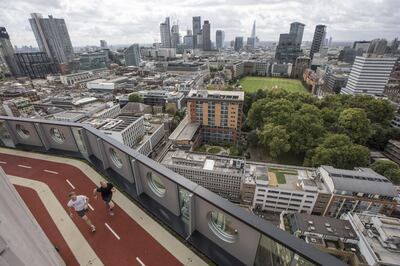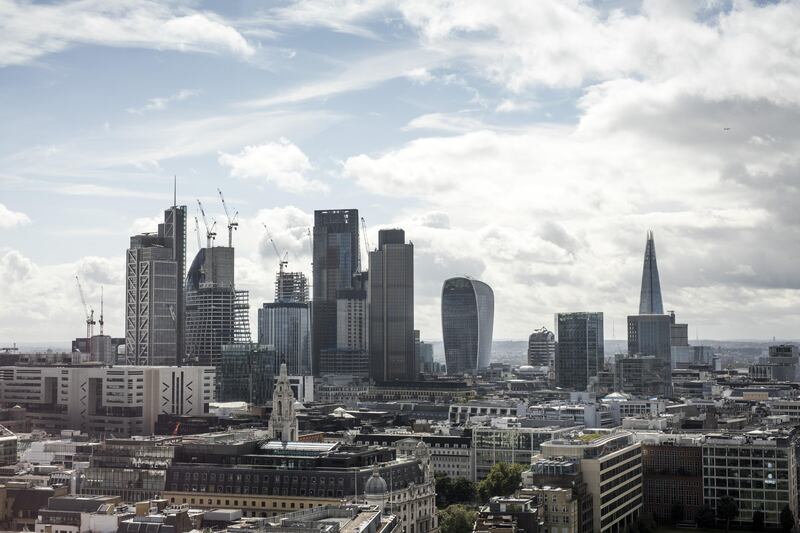London’s prime central locations are beginning to find a level, a relief to owners and investors who have seen values tumble in the double digits since 2014.
The rate of falls slowed again in the third quarter of 2017, but uncertainty over the impact of Brexit points to two further years of no growth, says a new report today by the estate agent and property adviser Savills on prime market forecasts.
However, it said when uncertainty clears and central London’s prime residential real estate again represents identifiably good value, prices will bounce, although not to the same extent as in previous cycles.
Prices in prime central London slipped by 1 per cent in the third quarter of 2017, taking annual falls to 5.2 per cent. Values are now 15.2 per cent below their 2014 peak, just ahead of the major stamp duty reform of December 2014, although most who bought before 2012 should be showing gains.
Five year price growth to the end of 2022 is expected to total 20.3 per cent, significantly outperforming wider prime London, a market that is more dependent on domestic buyers employed in the financial and business services sector for whom mortgage affordability is more of an issue. Average growth in these markets is projected to total 10.2 per cent, Savills said.
Beyond London, the UK’s prime regional markets will continue to follow the pattern of the past three years in showing little price movement. However, while London’s suburbs and extended commuter belt - the markets most dependent on equity flows from the capital - will wait until 2019 or beyond to see price growth, other regional markets are expected to see marginal price rises next year, albeit some remain below their 2007 peak.
While projected five year growth of 20 per cent may look ambitious in the current climate, it represents a departure – probably permanent – from the historic trend, Savills said, which saw average annual price growth of 5.7 per cent above the rate of inflation between 1979 and 2014.
“This was a period that saw London transformed from a purely domestic market in the pre-Thatcher years, before deregulation of the financial sector, to one of the world’s leading global cities," said Yolande Barnes, the head of world research at Savills. "This rocket-fuelled promotion phase cannot be repeated, but London can retain its position among an elite group of cities. We believe it will, though future returns will reflect London’s continuing low-risk world city status.”
In future, the higher costs now associated with buying a high value home, and the greater exposure to capital gains tax and inheritance tax for overseas owners will continue to moderate price growth regardless of the Brexit outcome.
“But we think the risks regarding London’s position as a global commercial centre have been overplayed,” said Ms Barnes. “Whatever the challenge from other cities, London will almost certainly remain a key global financial centre and develop as one of several European hubs for the growing tech sector. Its prime markets will therefore benefit from new domestic wealth generation as well as attracting wealthy international buyers.”

Brexit concerns and a weakened government mandate since the June election, means sentiment is fragile, said Lucian Cook, the head of UK residential research. “Where sellers are pricing for today’s market, transactions are proceeding, but the market is highly discretionary and price growth is not anticipated until there is clarity over the UK’s future relationship with Europe."
The wider prime London and regional markets have a far more domestic buyer profile and price growth will be more modest as a result.
“While the broader prime London housing markets may be impacted by equity flows from the core central zones, they are less affected by the concerns of international buyers,” said Mr Cook. “They are though more influenced by trends in the high value employment sectors such as finance, banking and tech, as well as the availability and cost of mortgage finance - all factors that will constrain price growth.”
_______________
Read more:
London's mega expensive homes push more buyers into mortgages
London property market sees biggest drop in asking prices this decade
'Microflats' gaining traction in London
_______________
Sellers in these markets have been slower to accept the realities of the current market, but this is changing. Analysis by Savills of TwentyCi data shows that in the year to the end of June 2017, there had been 122 price cuts for every 100 properties sold for more than £1 million (Dh4.95m).
This trend has translated into year to date price falls of 2.1 per cent in the wider prime London market, according to the Savills index. This is expected to continue into next year, with falls of 2.0 per cent in 2018 before levelling out in 2019, and returning to growth in 2020. The five year forecast is more subdued than for prime central London, at 10.2 per cent.
Beyond London, average prime regional values now seem to have levelled off and some will see marginal price growth next year.
The flow of wealth out of the UK capital plays a significant role in forecasts for the prime commuter zone, which will be slower to see price growth. But over a five year period, as London ticks up, these markets will likely be the strongest regional performers, with growth peaking at 15.3 per cent in the outer commuter zone, some 30-60 minutes outside the capital.
“Here, the price gap is key, particularly for Londoners looking for more space, and should help reduce price sensitivity in these markets,” says Cook. “For example, while £1m will buy just over 1,200sqft of home in Wandsworth [London], it will get you around 2,000sqft in Sevenoaks [Kent] and over 2,400sqft in Bath [Somerset] .”
_______________
Read more:
London house price slump spreads nationwide
UK’s worst property market set up for another beating
_______________
Further from London, much depends on more general economic drivers and the extent to which they support a wider ripple effect. The wider south of England, Midlands, north of England and Scotland have all seen small average price increases this year and that will continue into 2018.
All will undershoot London’s commuter belt over the five year period, but will see marginally stronger growth than outer prime London, suggesting that the value gap is stretched to its maximum, Savills said.





